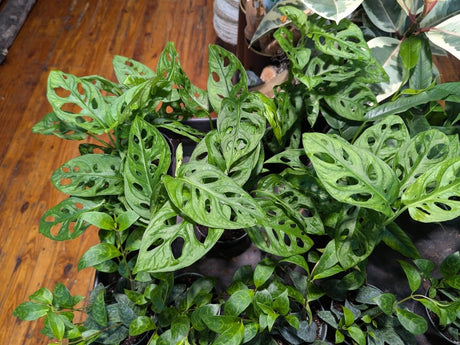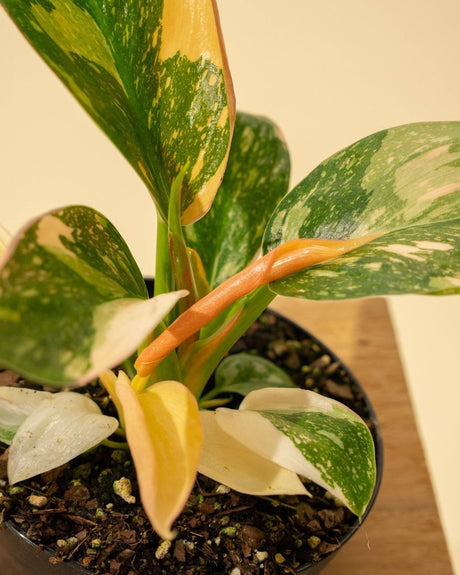A Beginner's Guide to Caring for Alocasia Plants
Alocasia, also known as Elephant's Ear, is a popular houseplant with its unique arrowhead-shaped leaves. While it can be a stunning addition to any home, it's important to note that its leaves are toxic to humans and pets, so caution should be exercised when caring for them. If you're new to caring for Alocasia, here are some tips to help you get started.
What light do Alocasia need?
Alocasia plants require bright, indirect light to thrive. Placing them in a spot with too little light can result in yellow or brown spots on the leaves. In extreme cases, the entire leaf may die off, causing the plant to wilt. However, direct sunlight can be too intense for the plant, so be sure to place it in a spot that receives indirect sunlight for most of the day.

What soil do Alocasia plants need?
Alocasia plants require well-draining soil that retains moisture. Potting soil that is rich in nutrients is ideal, but be sure to check the soil's drainage capacity. If it drains too quickly, you may need to repot it with a soil mixture that retains moisture better.

What temperature do Alocasia plants need?
Alocasia plants prefer warmer temperatures, with an average temperature of around 60°F being suitable. Avoid placing the plant near drafty windows or vents that blow air as this can cause the plant to go dormant. During the colder months, its growth may slow down, but it can still thrive if placed in a warm and bright spot.
What humidity levels do Alocasia like?
Being native to subtropical regions, Alocasia plants thrive in humid conditions. Placing them in a humid area, such as near a humidifier or in a pebble tray with water, can help them thrive. Be sure to wipe their leaves with a damp cloth every few weeks to remove dust and keep them healthy.

How do you fertilize an Alocasia plant?
While Alocasia plants do not require regular fertilization, feeding them once a month with organic fertilizer during spring and summer can help boost leaf growth. Slow-release granules or liquid fertilizers that are balanced can also be used.
How do you prune an alocasia plant?
Pruning Alocasia plants is only necessary if the leaves are damaged or dead. During the winter, removing damaged or withered foliage may be necessary. Alocasia plants are fast-growing and can easily recover from any issues.
How do I care for my Alocasia plant in winter?
During the winter months, Alocasia plants may go into dormancy, resulting in slower growth. To prevent this, placing them in a bright spot with a little extra heat can help. Watering the plant less frequently can also help hold warmth. Watering once every 2-3 weeks should suffice, but dry soil is also fine.

How do I repot an Alocasia plant?
Alocasia plants can grow quite large even in small pots and do not require frequent repotting. However, if you notice that it's hard to keep the plant watered or see roots coming out of the drainage hole, it may be time to repot. Spring or summer is the best time to do this to minimize transplant shock.
How do you propagate an Alocasia?
Alocasia plants can be propagated through rhizome division. This involves separating the plant's roots and replanting them in a new pot.
Overall, Alocasia plants can be a beautiful addition to your home, but they do require proper care and attention. By following these basic care tips, you can ensure that your Alocasia plant thrives and continues to be a stunning addition to your home.
















